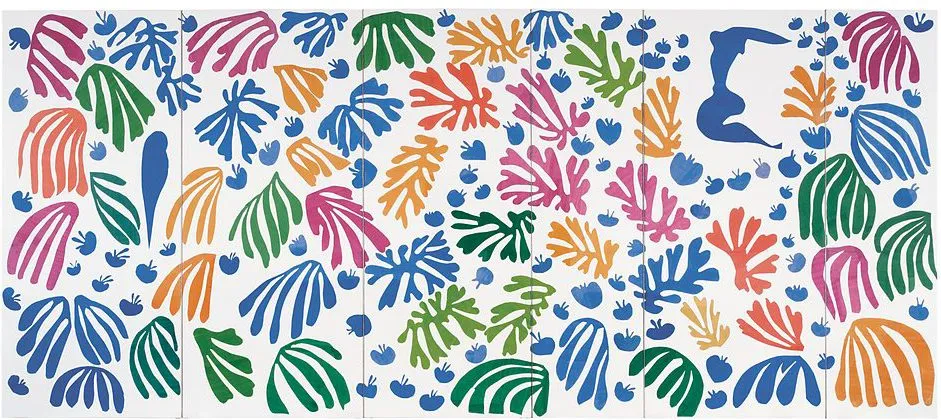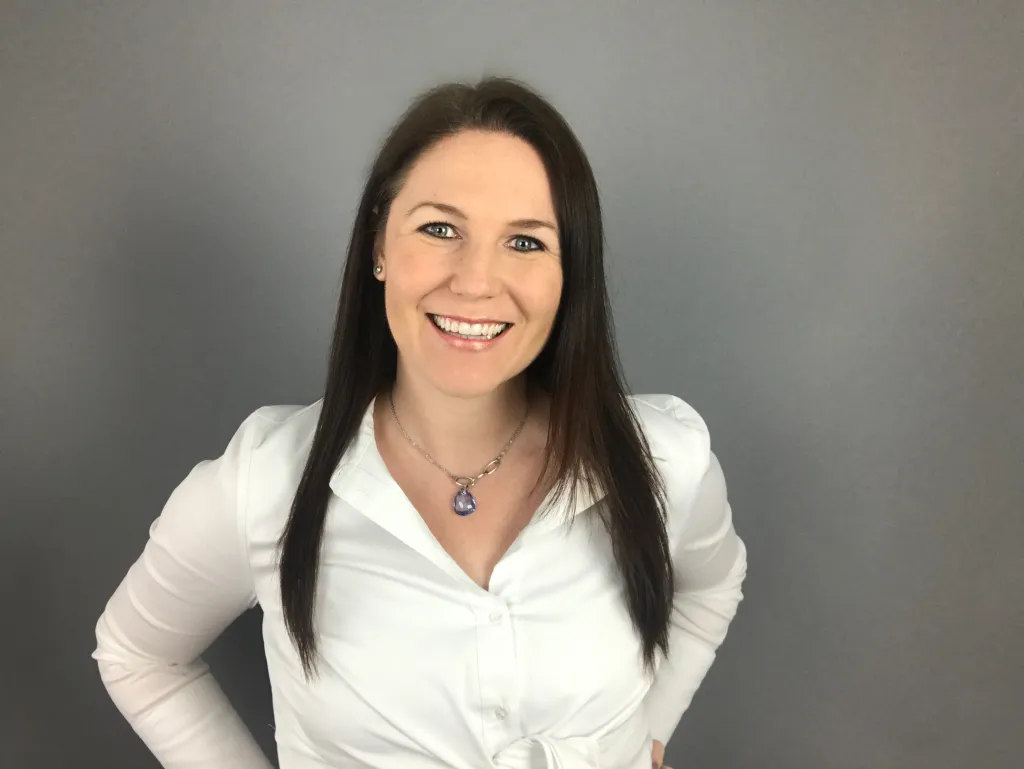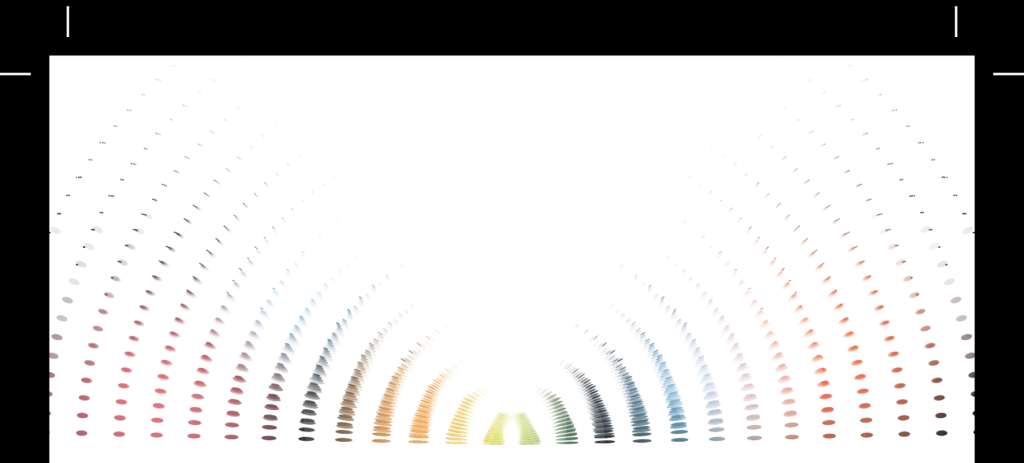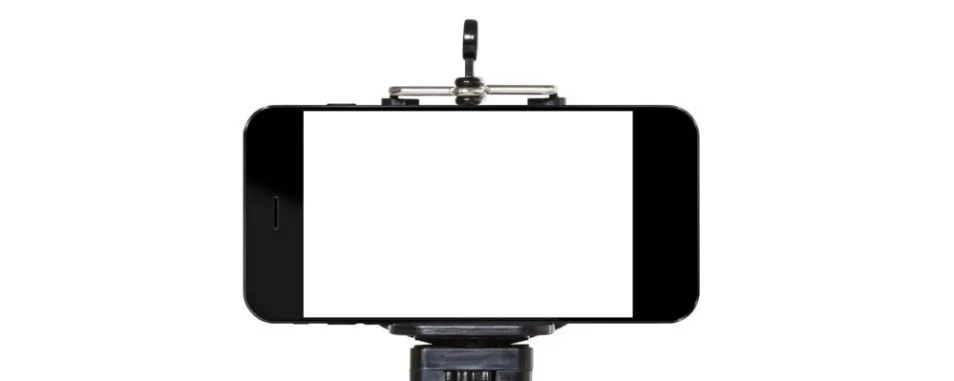Employee Development: Through the Lens of Matisse's Cut-Outs

Every time I view an art exhibit I go through with dual perspectives—the first an appreciation for the form, function and technique of the artist within a historical context. The second, to see what metaphors and analogies I can draw from the form, function, and technique to my personal and professional lives.
Late in his life, Henri Matisse’s health declined, and he found himself sanctioned to a chair or bed for the majority of his day. Instead of giving up on creativity, he found a new outlet, what he called “drawing with scissors” that enabled him to transcend his physical limitations and resulted in a new art form that is now on a glorious display at the Museum of Modern Art in New York City.
What’s interesting about this art is the technique of overlay, non-waste, and maneuverability—a fantastic metaphor for employee development.
Overlay—Matisse took considerable time deeming any aspect of a cut-out complete. Since each piece cut was done from free-form, no two were alike. When he wasn’t completely satisfied with the performance from a piece, he would add subtle changes by pinning tiny cuts of paper to make the form just right. He didn’t discard the imperfect piece.
In corporations we often subjugate the imperfect—when all that is needed is a subtle shift or minor addition. We look at the short-term picture instead of the long-term masterpiece. Investing in correcting imperfections with minor additions instead of removing them all together and starting from scratch is a long-term strategy with unlimited potential.
Non-waste—Matisse used both the positive and the negative space with his cut-outs. When a piece of paper fell to the ground after the original form was cut, he evaluated the leftover and found a way to organically work it into his composition—or into future compositions.
With employee development, we often see only the final goal—the final product—without giving appreciation to the steps that were taken to reach that end state. The efforts that your employees exert to deliver the final result need to be recognized. Who knows—the steps that were taken along the way could result in a product of their own.
Maneuverability—Matisse used his walls as a living canvas. He would direct cut-outs to be pinned in one location, only to move them around multiple times after until he found just the right fit. Often, the right move of one piece would lead to the creation of an entire new work, or the placement of a piece into a new landscape.
With employees, finding the right fit is important. To be immovable is detrimental to organizational progress. A good leader will know how to figure out where to best place each employee, realizing that the initial intention—perhaps the initial job someone was hired for—may not be the right fit.
Inject overlay, non-waste, and maneuverability techniques into your employee development approach and see what masterpieces develop.
Subscribe Our Newsletter
Related Blogs
Every time I do a Facebook Live from my new(ish) studio, I get requests for details on my set-up. Without further ado, here you go!
https://www.facebook.com/plugins/video.php?href=https%3A%2F%2Fwww.facebook.com%2Fjill.schiefelbein%2Fvideos%2F1691029167658582%2F&show_text=0&width=267
[Please know the links are Amazon Affiliate links. It costs you nothing more to use these links but it gives me a very tiny kickback and lets Amazon know that I’m referring traffic.]
Microphone.
Audio. Is. Everything. Make sure to invest in a good one. This one blows my mind again and again. I reported from the center of Times Square, New York City and you could hear every word I said clearly with this mic. Worth every penny.
Lighting.
After audio, lighting is essential. I love this kit. It’s a little bulky, but if I can make it work in my 95 square foot space, you can likely make it work anywhere for you!
Backdrop.
I love my backdrop paper. If you have a bigger space you could use fabric, but I think the paper looks sharp and it’s very flat (no wrinkles). If you’re going to have a permanent set-up, I’d really suggest going this way. I’m using “Fashion Grey” as my color. There are many others. But this is the exact roll I bought.
Other Backdrop.
I just ordered a green screen backdrop to go on the other wall, in case I want to get more creative. Here’s exactly what I ordered (same paper and brand, just a different color).
Some video samples (shot on my phone, with the exact set up above).
https://www.facebook.com/plugins/video.php?href=https%3A%2F%2Fwww.facebook.com%2Fjill.schiefelbein%2Fvideos%2F1701460233282142%2F&show_text=0&width=560
https://www.facebook.com/plugins/video.php?href=https%3A%2F%2Fwww.facebook.com%2Fjill.schiefelbein%2Fvideos%2F1721306864630812%2F&show_text=0&width=560
Writing great content is important. When people find your content, it needs to be useful, provide great value, and be enjoyable to consume. But how do people find your content in the first place? The secret: You have to know how to write copy for both humans and computers.
On February 25th at the Global Speakers Summit in Auckland, New Zealand, this was the topic of one of two sessions I was asked to present. Unfortunately, family circumstances kept me from traveling, but thanks to the organizers, I was able to deliver the content virtually with the help of my friend and innovation speaker Christian Buchholz.
Here’s the recording of the session for those who want to learn more about the strategies behind creating content that can be enjoyed by humans and is searchable by computers.
Want to get a worksheet that will help you analyze your YouTube channel and make better descriptions? Here’s a free download.
Video is powerful. We know its power in marketing and conversion. We know it can help educate and help inspire. And we know that if we can capture video of others sharing a recommendation or testimonial about our work, that it will go a long way towards social proof and credibility.
On February 25th at the Global Speakers Summit in Auckland, New Zealand, this was the topic of one of two sessions I was asked to present. Unfortunately, family circumstances kept me from traveling, but thanks to the organizers, I was able to deliver the content virtually with the help of my friend and brilliant speaker Ilja Grzeskowitz.
Here’s the recording of the session for those who want to learn more about the technologies and tools used to create effective video content, and nine questions you can ask that will lead to stellar video testimonials.
For a list of tools and technologies I use to make videos, check out my previous post on Video and Livestream Production Equipment: What’s in My Fanny Pack
I’m often asked what tools, technologies, and products I use to create video (especially livestream video for Facebook). This video (and post below with the links) will tell you everything you need to know!
I have just one favor to ask of you…please…pretty please…
If you decide to get a product you learned about here, would you be kind enough to click the links below and purchase from them? It goes to Amazon. Gives you the same price you’d get searching for the item yourself. But it tells Amazon that my site is referring them traffic and they like me better and give me a small percentage to say thank you. Plus, these stats are important to me as I try to pitch my services to companies.
Enjoy!
Recommended (and other) Products
| Lavalier (Clip-On) Mic Options | ||||
| Sennheiser ClipMic digital Mobile Recording Microphone for iOS Devices Yes. It’s $190. But worth it. My absolute favorite mic. And it’s so tiny that it travels anywhere. The quality is superb (as you’ll see in the video) and you’ll find yourself using it way more than you think…believe me… | Shure MVL Omnidirectional Condenser Lavalier Microphone [1/8″ (3.5mm)] + Windscreen, Tie-Clip, Mount and Carrying Pouch Mid-range budget (about $70). If you’re not ready to drop $190 on a mic yet, here’s a less expensive option for you. I haven’t tested it yet, but the reviews are pretty good. | Professional Grade Lavalier Lapel Microphone Omnidirectional Mic with Easy Clip On System Perfect for Recording Youtube / Interview / Video Conference / Podcast / Voice Dictation / iPhone For an even cheaper budget option, this mic has great reviews. I haven’t tested it, but it’s a good place to get started and will be better than just your phone alone for audio. |
| HANDHELD Mic Options | ||||
| IK Multimedia iRig Mic HD high-definition handheld microphone for iPhone, iPad and Mac (black) For interviewing others on a livestream. I love this mic. The sound quality is great, even in very windy and noisy environments. I’ve used it at concerts, on top of tall buildings, and at parties and the audio comes through very clear (about $85). | IK Multimedia iRig Mic HD 2 high-definition handheld digital microphone for iPhone, iPad, Mac and PC This is the newer version of the first mic. If I were in need of an upgrade, I’d get this. Honestly, though, the first version works well. I have the original version, but this one is a little easier to find for Prime members. But it’s about $25-30 more than the one I have (about $115). | IK Multimedia iRig Mic handeld condenser mic for smartphones and tablets Here’s another option, non iPhone specific version. I don’t think the quality is AS good, but it’s a little cheaper (around $60), and definitely better than no mic! This works on the headphone jack, so if you have a newer iPhone make sure to have your adapter handy. Can also use on computer. |
| CELL PHONE MOUNTS AND MINI TRIPODS | ||||
| Vastar Universal Cell Phone Tripod Mount Adapter Holder for iPhone/Samsung Galaxy/Nexus and More Cell Phones Use on Tripod, Monopod, Selfie Stick, Tabletop Tripod Stand and More Under $5 and will fit with any existing tripod with a standard mount attachment. This is a no-brainer purchase. Plus, I think it’s more sturdy than some of the other (more expensive) mounts. | Universal Mini Tripod, Walway Adjustable 360° Rotation Lightweight Desk Cell Phone Mount Stand for GoPro/ Cameras/ Camecorders/ Smartphones (Black) The bare bones, basic, not super-high quality but functional mini-tripod. Will pack easily into any bag. Or even your back pocket. But you’ll need to also get a cell phone mount if you want to use this tripod. | Rienar Octopus Style Portable and Adjustable Tripod Stand Holder for iPhone Cellphone This bendy tripod I like quite a bit, especially at the price point (under $10). The mount that comes with it, I find, isn’t as good as the first one listed here, so I took it off and used my existing mount. But if you’re really on a budget, I’d get this one and rock it. |
If I didn’t already have any of the above tools, though, and wanted to get a kit with everything, this is the one I would purchase. Flexible tripod. Strong cell phone mount. And a Bluetooth remote. (All under $20!)
KobraTech Mini Cell Phone Tripod – TriFlex Mini – Flexible iPhone Tripod for Any Smartphone
| Home Studio Equipment (Used to make the video above) | ||||
| Neewer 75″/6 Feet/190CM Photography Light Stands for Relfectors, Softboxes, Lights, Umbrellas, Backgrounds Super cheap. Super compact. Super easy-to-use tripod. It’s lightweight, easily storeable, and sturdy enough for home use, Even though the title says lighting and backdrop stand, it has a standard tripod screw mount for your phone adapter (shown above). | Brightech Eclipse LED Floor Lamp – Double Rings of Light Bring Sci-Fi Ambiance to Contemporary Spaces – Dimmable Bright Halo Tall Standing Modern Lamp for Living Room, Bedroom and Office – Silver This light makes me so happy. It doubles as a floor lamp! And it looks cool. I can lower the big ring, put my phone on the tripod in the middle of the ring, and record with easy lighting. Plus, three light settings! | Oh! The Chatlight! I like this handy little guy. If you want to get one, please use THIS LINK because they like it when I refer people to them. In fact, they were the first company about 18 months ago who reached out after I posted about their product online and gifted me an extra light as a thank-you. My first taste of what being an influencer could feel like…I want more of that! 🙂 |
And, of course, be sure to grab a copy of my book! Dynamic Communication: 27 Strategies to Grow, Lead, & Manage Your Business (from Entrepreneur Press). You can get more strategies for using video to GROW your business in chapters 6, 7, 8, & 9!
Dynamic Communication: 27 Strategies to Grow, Lead, and Manage Your Business

In this Dynamic Communication interview, author Jill Schiefelbein chats with Alex Charfen, CEO of Charfen, who gives a tip that can help you grow your business. Perfect for entrepreneurs, small businesses, sales teams, marketing teams, livestreamers, video creators and more.
- How is livestreaming different than video marketing?
- How can you build trust with your audience and form relationships?
- Why should you not focus on selling in videos and livestreams?
See the interview video clip at: https://www.entrepreneur.com/video/289543
Alex’s interview is one of 27 featured in Jill’s latest book: Dynamic Communication: 27 Strategies to Grow, Lead, and Manage Your Business available at Amazon, Barnes & Noble, and iBooks.
In this Dynamic Communication interview, author Jill Schiefelbein chats with Eric Yuan, CEO and founder of Zoom, who gives a tip that can help you manage your business. Perfect for entrepreneurs, small businesses, sales teams, customer service departments, project managers and more.
- How do you deliver happiness to your customers?
- How can a CEO listen to his or her customers and respond to concerns?
- What are some best practices for managing feedback?
- Why might getting rid of project managers be a good idea for customer service?
See the interview video clip at: https://www.entrepreneur.com/video/289427
Eric’s interview is one of 27 featured in Jill’s latest book: Dynamic Communication: 27 Strategies to Grow, Lead, and Manage Your Business available at Amazon, Barnes & Noble, and iBooks.



